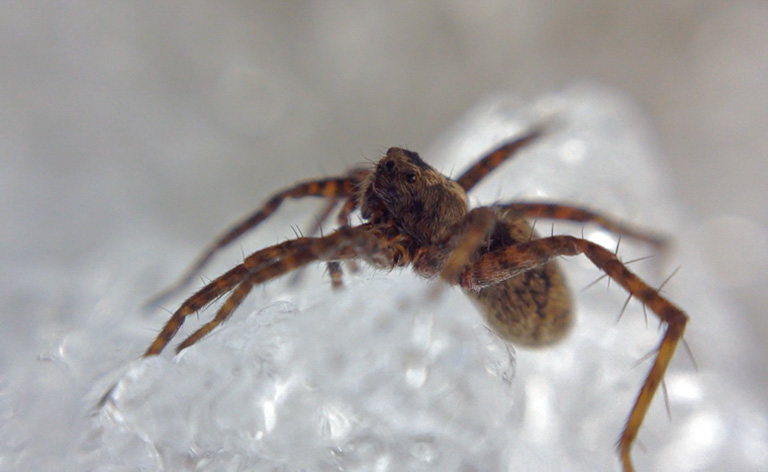- A team of researchers found that higher temperatures led Arctic wolf spiders to eat fewer insect-like springtails in study plots.
- Springtails eat fungus, an essential decomposer in the Arctic ecosystem, so with more springtails around in the warmer study plots, there was less decomposition.
- The scientists suggest that this change in prey preference could modulate the effects of a warming climate on the carbon that’s released from the thawing tundra.
Climate change could shift the appetites of Arctic spiders, leading to the slower release of carbon from the thawing tundra, according to new research led by biologist Amanda Koltz of Washington University in St. Louis.
“Spiders are not going to save us from climate change,” Koltz said in a statement, “but we found that decomposition is slower under warming when there are more wolf spiders present.”

Spiders aren’t at the top of most lists of quintessentially “Arctic” animals. But they’re abundant on the tundra. In fact, Arctic wolf spiders (Pardosa glacialis) outweigh more recognizable gray wolves (Canis lupus) by 80 times in the area of Alaska around Toolik Field Station, where Koltz’s team set up sample plots to test the effects of warmer temperatures on the spiders. And wolf spiders are vital players in the ecosystem, sitting near the top of the food web, so when their tastes change, the effects can ripple through the ecosystem.
One of the wolf spider’s favorite prey is the insect-like springtail. Springtails eat fungus, which in turn is a significant consumer of dead plants. It’s a critical role: As fungi break up decaying material, they unlock the cached nutrients and make them available to the tundra’s plants. In the process, however, they also release climate-warming carbon.
“The way that organisms interact with one another can influence important ecosystem functions like how much carbon stays fixed by plants, how quickly decomposition happens, and how nutrients are cycled within that ecosystem,” Koltz said. “Controls on nutrient cycling in the Arctic are very important for us to understand, because this region plays a disproportionately large role in the global carbon cycle.”

With greater numbers of wolf spiders, Koltz and her colleagues expected there to be fewer springtails, more fungus and thus higher rates of decomposition. And that’s precisely what the team found in their study plots with the most spiders — when they were kept at ambient temperature.
But when the researchers increased the temperature by 1 to 2 degrees Celsius (1.8 to 3.6 degrees Fahrenheit), they found that the number of springtails was higher, even in the plots with lots of spiders. The springtails ate more fungus, and decomposition under these conditions slowed compared to the ambient-temperature plots.
The scientists figure that in the warmer climate, the spiders’ preferences changed, and they went after other prey.
“This suggests that under some circumstances, [spiders] could be alleviating some of the effects of warming on carbon losses from the tundra,” Klotz said. “It’s a good thing.”

The research, published July 23 in the journal Proceedings of the National Academy of Sciences, adds a new wrinkle to our understanding of what an altered climate could mean on a broader scale.
“We often think about how warmer temperatures might strengthen or weaken interactions between predators and their prey,” Koltz said. “But in this case we show that when warming alters those interactions, it can also lead to changes in ecosystem-level processes like decomposition rates.”
Banner image of a wolf spider by Kiki Contreras.
Citation
Koltz, A. M., Classen, A. T., & Wright, J. P. (2018). Warming reverses top-down effects of predators on belowground ecosystem function in Arctic tundra. Proceedings of the National Academy of Sciences.
FEEDBACK: Use this form to send a message to the author of this post. If you want to post a public comment, you can do that at the bottom of the page.














